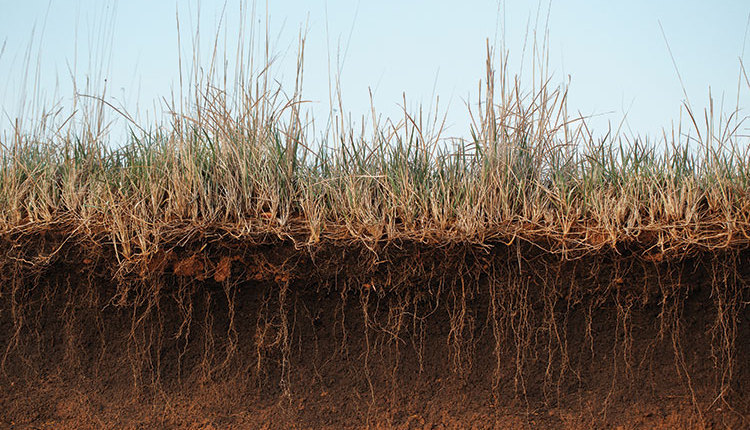The author is an assistant professor of agroecosystem management for food system resilience at The Ohio State University.

Pastures are highly interconnected systems where soil, plants, animals, and the atmosphere continuously influence one another. Changes in one part inevitably trigger changes in others. For example, grazing strategies directly affect plant growth, nutrient cycling, soil health, and greenhouse gas (GHG) emissions. Understanding these connections is key to optimizing grazing systems for both productivity and sustainability.
Livestock grazing determines the rate of essential ecosystem processes such as plant growth, senescence, and decomposition. These processes, in turn, influence animal-related variables like forage intake, excreta distribution, and the quantity of nutrients excreted. Animal activities, such as grazing and trampling, affect soil properties like moisture, temperature, pH, and density, which in turn shape microbial activity. This microbial activity drives the production of key greenhouse gases: carbon dioxide (CO2), methane (CH4), and nitrous oxide (N2O).
For example, grazing changes the structure of pastures, impacting forage quality and influencing enteric CH4 emissions during digestion. Meanwhile, nitrogen fertilization may enhance forage productivity and build carbon storage in soil, but it can also elevate N2O and CH4 emissions. Excess nutrients not used by plants or immobilized in the microbial community are lost.
Recycling in pastures
Nitrogen inputs in pastures come from various sources, including fertilizers, plant residues, and livestock excreta. Consider a fertilized grassland receiving 225 pounds of nitrogen per acre per year:
- This system may produce 4,500 to 7,000 pounds of dry matter per acre (DM/ac) of plant residues annually.
- Assuming an average nitrogen content of 1.7% in dry matter, this adds 75 to 125 pounds N/ac per year to the soil.
- Root decomposition contributes another 4,500 pounds DM/ac of organic material.
- Livestock excreta accounts for an additional 175 pounds N/ac per year, with 80% of ingested nitrogen excreted.
All together, these inputs provide roughly 350 pounds N/ac per year, much of which is potentially recyclable. However, excess nitrogen that is not utilized by plants or immobilized by microbes can be lost through runoff, leaching, volatilization, or as GHG emissions.
Urine: a double-edged sword
More than 60% of nitrogen excreted by livestock is in the form of urine, where 80% is present as urea. Once deposited, urine nitrogen can be absorbed by plants, immobilized by microbes, adsorbed onto soil particles, or escape as ammonia (NH3) or N2O emissions, depending on soil conditions such as moisture, temperature, and pH.
Dietary crude protein (CP) is a major factor influencing nitrogen recycling. Higher CP content elevates urea production, which can lead to greater losses as NH3 or N2O.
Feces: slow and steady release
Unlike urine, the nitrogen in feces is not readily metabolizable and breaks down gradually, reducing losses by leaching or volatilization. Research suggests that fecal nitrogen excretion in dairy cows averages about 132 grams of N per cow per day, regardless of CP content in their diet. This makes diet manipulation ineffective in altering fecal nitrogen cycling.
Feces decomposition depends on these two processes:
- Physical breakdown — This is caused by trampling and precipitation, which can be influenced by stocking density. Higher densities lead to faster breakdown.
- Biological degradation — This is driven by soil organisms like fungi, bacteria, and earthworms.
Short grazing periods, such as in rotational grazing systems, promote more uniform distribution of feces and faster nutrient release. However, factors like water availability and shade can create uneven excreta patterns.
A key greenhouse gas
Methane is emitted in two primary forms in pastures: enteric and fecal.
Feces are associated with CH4 production because they provide adequate conditions for methanogenic (microorganisms responsible for CH4 production) development, such as temperature and moisture, which raise readily-available carbon content (substrate). Methanogenic microorganisms are anaerobic, and if they do not find favorable conditions for their development, such as when feces decomposition created aerobic conditions and reduced carbon content, CH4 production ceases. Fecal CH4 emissions are short-lived, lasting four to 14 days.
As feces decompose, anaerobic conditions give way to aerobic conditions, halting CH4 production. In some cases, methanotrophic microbes oxidize atmospheric CH4, creating temporary methane sinks in the soil. Methane sequestration in spots where feces were deposited and decomposed might remain for up to one year. The amount of CH4 sequestered by pasture soils is relatively low and significantly smaller than the CH4 emitted by cows through enteric fermentation, commonly known as enteric methane.
Enteric CH4 is the primary GHG emitted from grazing systems, accounting for 30% of total CO4-equivalent emissions in systems with high concentrate supplementation and up to 84% in predominantly pasture-based systems. Enteric CH4 production is influenced by dry matter (DM) intake and the chemical composition of the forage consumed.
Grazing strategies can be tailored to reduce CH4 emission intensity (measured as grams of CH4 per kilogram of final product) and CH4 yield (grams of CH4 per kilogram of DM intake). Grazing strategies can be designed to optimize key processes, including plant growth, the interaction between animals and plants, and the activity of microorganisms in the rumen.
Rotational grazing systems — such as adaptive multi-paddock grazing where livestock graze only the top leafy parts of forage — often improve forage quality and reduce enteric CH4 emissions. These grazing strategies lead to more frequent grazing cycles with shorter recovery periods, reduced herbage losses, a higher proportion of leaves, greater leaf accumulation, and improved grazing efficiency.
A previous study showed that although more milk production contributes to constant daily enteric CH4 emissions across pregrazing targets, the intensity of CH4 emissions (grams of CH4 per kilogram of milk) and CH4 yield (grams of CH4 per kilogram of dry matter intake) were reduced by 21%. When analyzed on a per-acre basis, the higher stocking rate associated with these systems resulted in higher enteric CH4 emissions from pastures. However, the growth in milk yield per acre (51%) outpaced the rise in CH4 emissions (29%), leading to a net mitigation of 16% in enteric CH4 emissions. This highlights the potential of well-designed grazing strategies to balance productivity and environmental impact.
Designing grazing systems
Grazing strategies can be tailored to optimize forage quality, nutrient recycling, and GHG emissions. In a study conducted in temperate pastures, two very contrasting grazing systems were designed, with different stocking rates and densities. The nonirrigated high-density stocking system consisted of 120 cow-calf pairs rotating on a total of 120 hectares (ha), with a stocking rate of one cow per ha, a stocking density of 112,000 kg of bodyweight per ha, and a rest period of 60 to 90 days. The irrigated low-density stocking system consisted of 64 cow-calf pairs, rotating on a total of 26 ha of pasture, with a stocking rate of 2.5 cows per ha, a stocking density of 32,700 kg of bodyweight per ha, and a rest period of 18 to 30 days.
We monitored carbon fluxes under contrasting grazing strategies by evaluating the three main GHGs, expressed as CO2 equivalents, as well as carbon and nitrogen stocks in pasture soils. Results showed that the high-density stocking system led to greater organic carbon storage in the soil, to a depth of 30 centimeters, compared to the low-density stocking system. Nitrogen stocks also increased in the high-density stocking system.
The high-density stocking system, with the longer rest periods of 60 to 90 days between grazing events, allowed for decomposition of plant residues, contributing to higher levels of carbon stocks. The low-density stocking system had more frequent grazing with shorter rest periods, which promoted the physical breakdown of plant residues through trampling, accelerated decomposition, and higher organic matter in the topsoil layers.
This study highlighted how different grazing intensities and practices influence carbon and nitrogen dynamics in pasture ecosystems, emphasizing the role of management strategies in determining soil health and GHG. There was no difference in daily enteric CH4 emissions between the systems, which was associated with animal selectivity of a high-quality diet.
Low-density stocking systems, where livestock graze only the top leafy parts of plants, promotes higher forage quality and faster regrowth. These systems often lead to shorter rest periods, reduced herbage losses, and greater grazing efficiency. While higher stocking rates may increase total methane emissions, they also boost productivity. For example, one study found that milk yield per acre increased by 51%, while enteric methane emissions rose by only 29%, resulting in a 16% reduction in methane intensity.
Sustainable grazing is a balancing act. By understanding the intricate connections between soil, plants, animals, and the atmosphere, we can develop strategies that maximize productivity while minimizing environmental impacts. Considering the full spectrum of GHG emissions — alongside nutrient cycling and soil health — is essential to achieving truly sustainable livestock systems.
This article appeared in the February 2025 issue of Journal of Nutrient Management on pages 18-20. Not a subscriber? Click to get the print magazine.







